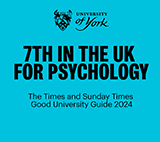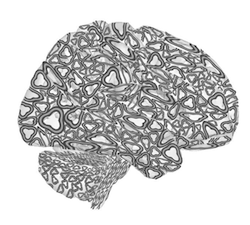
Two PhD studentships in Visual Neuroscience available
Posted on 2 July 2013

Two, three-year, PhD studentships are available at the University of York to work in the labs of Dr Heidi Baseler, Professor Tony Morland and Professor Alex Wade. The studentships are fully funded (fees paid) for EU citizens and those fulfilling residency criteria and offer a stipend of £12,500 per annum. Applicants from outside the EU are eligible, but will have to pay tuition fees.
The studentships form part of a Collaborative International Research Centre (CIRC) funded by the University of York to foster collaborative research into vision and visual dysfunction with three other partner Universities. The opportunity exists therefore for holders of the studentships to undertake funded study visits in the labs of Professors Frans Cornelissen (University of Groningen, Netherlands), Mark Greenlee (University of Regensburg, Germany) and Michael Hoffmann (University of Magdeburg, Germany).
The researchers at York and the partner institutions have interests in many aspects of visual function and use neuroimaging and psychophysical techniques (MRI, fMRI, MEG, VEP, ERG and TMS) to determine the neural mechanisms that underpin human vision in health and disease. Example publications are listed below, but research in the host labs is not limited to the themes described in these articles. For additional research publications please check Google scholar entries.
Silson EH, McKeefry DJ, Rodgers J, Gouws AD, Hymers M, Morland AB. (2013) Specialized and independent processing of orientation and shape in visual field maps LO1 and LO2. Nature Neuroscience 16:267-9.
Baseler HA, Gouws A, Haak KV, Racey C, Crossland MD, Tufail A, Rubin GS, Cornelissen FW, Morland AB. (2011) Large-scale remapping of visual cortex is absent in adult humans with macular degeneration. Nature Neuroscience. 14:649-55.
Tsai JJ, Norcia AM, Ales JM, Wade AR. (2011) Contrast gain control abnormalities in idiopathic generalized epilepsy. Annals Neurology. 70:574-82.
We are looking for a bright graduate with a strong interest in visual science. You will have at least a predicted upper second class degree – or equivalent - in a scientific discipline. It is essential that those wanting to be considered are fluent English speakers and are confident writers. Computer skills, particularly in Matlab and/or Python, are highly desirable. To apply include a CV detailing your academic qualifications and research experience. Applicants should include a research statement outlining (i) a research question in vision science (ii) why it is important and (iii) how you might go about investigating it with an initial experiment at the University of York. Successful applicants will not be constrained to followup on the research described in their statement. The statement will however form part of the selection process and it must be no longer than one side of A4 in 12pt font. Please send your application (in PDF format) to antony.morland@york.ac.uk
DEADLINE
The deadline for application is Monday 10th July. We will interview shortlisted candidates in person or via skype.
FURTHER INFORMATION
Information about the Department of Psychology and the Hull-York Medical School
The Department of Psychology is one of the UK’s most highly rated departments with a strong research focus on Experimental Psychology. There is a thriving vision community with six faculty involved in vision research. The laboratory facilities for vision research underwent refurbishment and were re-equipped in 2011. The Department also has excellent neuroimaging facilities housed in the York Neuroimaging Centre (YNiC). The faculty in the Department of Psychology have strong links with faculty in the Hull-York Medical School, particularly those in the Centre for Neuroscience.
Information about the University of York:
Founded on principles of excellence, equality and opportunity for all, the University of York opened in 1963 with just 230 students. In less than 50 years it has become one of the world's leading universities and is now one of the top ten universities in the UK for teaching and research. It is also first in the UK and eighth in the world in the Times Higher Education world rankings of universities less than 50 years old.
Located within walking distance of York city centre, our safe and attractive Heslington campus is home to most of our departments including the Departments of Psychology and the Hull-York Medical School. In recent years, our £750m campus expansion has seen the opening of seven new buildings, increasing our capacity for student numbers and providing more world-class facilities for the 21st century. Sustainability plays a key role in this ambitious development.
Information about York:
York is a beautiful, medieval city in the North of England with excellent rail links to London (journey time of less than two hours). York has a population of less than 200,000, while having a host of amenities that cities of a similar size cannot boast. It is therefore a stimulating place to live and enjoy academic study. For more information about York please see Study at York pages.
